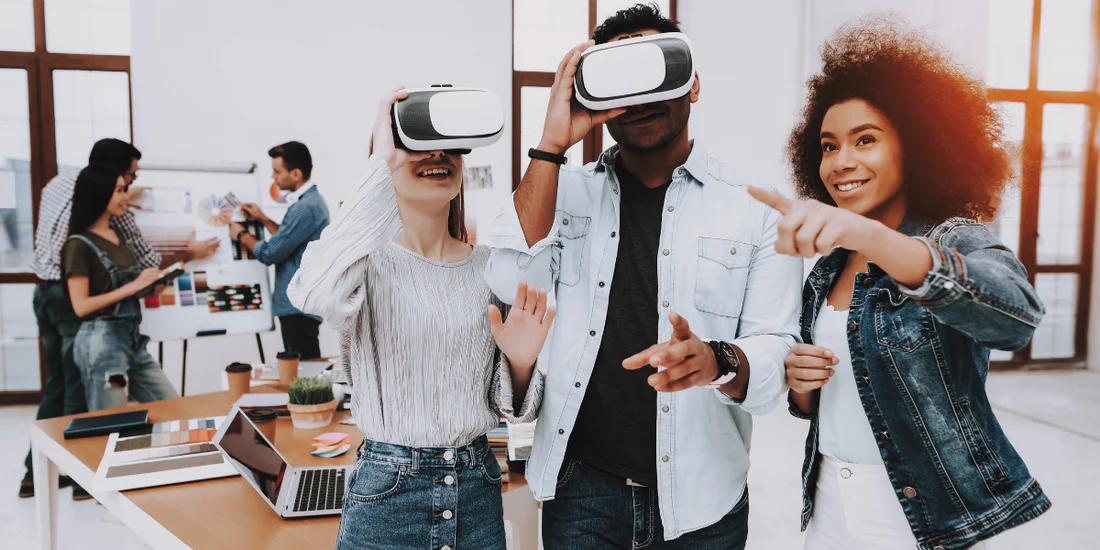
Virtual Reality in Education: Enhancing Learning Experiences with Meta's Impact
By Adedayo Ebenezer Oyetoke Published on: June 3rd 2023 | 4 mins, 728 words Views: 492
Virtual Reality (VR) has been making waves in various industries, and education is no exception. With the rapid advancements in technology, VR is transforming the way we learn and interact with educational content. Meta, formerly known as Facebook, has been at the forefront of this revolution, investing heavily in VR technology and its applications in education. In this blog, we will explore the impact of VR on education, the role of Meta in shaping the future of learning, and the benefits of incorporating VR into educational experiences.
1. Immersive Learning Environments
One of the most significant advantages of VR in education is the ability to create immersive learning environments. These environments allow students to explore and interact with educational content in a more engaging and realistic manner. For example, students can virtually visit historical sites, explore the depths of the ocean, or even travel through the human body. This level of immersion can lead to a deeper understanding of the subject matter and improved retention of information.
Meta's Impact: Meta has been investing in the development of VR platforms like Oculus Rift and Quest, which provide users with high-quality, immersive experiences. These platforms have the potential to revolutionize education by making immersive learning environments more accessible to students and educators worldwide.
2. Collaborative Learning
VR technology enables students and educators to collaborate in virtual spaces, breaking down geographical barriers and fostering global connections. Students can work together on projects, participate in group discussions, and even attend virtual classes with peers from around the world.
Meta's Impact: Meta's Horizon Workrooms is a prime example of how VR can facilitate collaboration in education. This virtual meeting platform allows users to join a shared virtual space, interact with 3D objects, and collaborate on projects in real-time.
3. Personalized Learning Experiences
VR can be used to create personalized learning experiences tailored to individual students' needs and preferences. By tracking students' progress and performance, educators can adjust the content and pace of instruction to ensure that each student receives the support they need to succeed.
Meta's Impact: Meta has been working on developing AI-driven tools that can be integrated with VR platforms to create personalized learning experiences. These tools can analyze students' performance data and provide real-time feedback, helping educators to adapt their teaching strategies accordingly.
4. Enhanced Accessibility
VR technology can make education more accessible to students with disabilities or those who face physical barriers to attending traditional classrooms. For example, students with mobility impairments can participate in virtual field trips, while those with hearing impairments can benefit from visual cues and subtitles in virtual environments.
Meta's Impact: Meta has been actively working on improving the accessibility of its VR platforms, ensuring that they cater to the needs of diverse users. This includes features like customizable avatars, closed captioning, and compatibility with assistive technologies.
5. Professional Development and Training
VR can also be used to enhance professional development and training for educators. Teachers can participate in virtual workshops, observe best practices in action, and even practice their teaching skills in simulated classroom environments.
Meta's Impact: Meta has partnered with various educational institutions and organizations to develop VR-based training programs for educators. These programs aim to equip teachers with the skills and knowledge they need to effectively integrate VR technology into their classrooms.
However, it is important to note that VR technology is still in its early stages, and there are challenges that need to be addressed. For example, the cost of VR equipment can be a barrier to access for some students and schools. Additionally, there is a need for more research to understand the long-term effects of VR on learning outcomes and student engagement.
Despite these challenges, the potential benefits of VR in education are significant, and Meta's investments in this technology are helping to drive its adoption and development. As VR becomes more accessible and affordable, we can expect to see more widespread use of this technology in classrooms around the world.
In conclusion, Virtual Reality has the potential to transform education by creating immersive, collaborative, and personalized learning experiences. Meta's impact on the development and adoption of VR technology in education is significant, and we can expect to see even more innovative and transformative educational experiences in the future. As educators and learners, it is important to embrace these new technologies and explore their potential to enhance learning experiences and prepare students for the challenges of the 21st century.